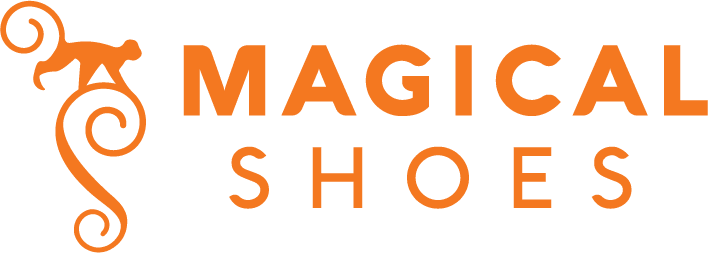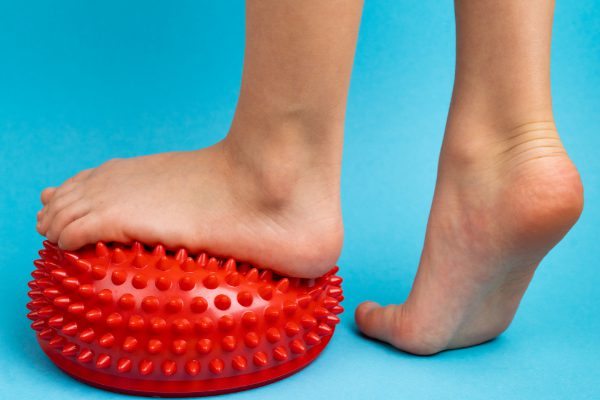
Our body is a beautiful machine, consisting of many parts that complement each other. Unfortunately, improper habits, injuries and walking in, for example, shoes that are too tight can spoil even the natural movement of the foot. Not all concepts that are referred to as conditions are , “bad.
Such concepts include pronation and supination, two mechanisms of the foot that can be spoiled by bad habits.
If, in addition to the term supination of pronation, you are interested in other conditions of civilization – check out our other articles about:
- flat feet,
- clubfoot,
- hammer toes,
- hallux valgus.
Pronation and supination – the natural movement of the foot
Pronation, otherwise known as internal rotation, is a term often used in the context of running, especially in reference to pronation of the foot. However, it is worth noting that the concept of pronation applies not only to the foot, but also to other parts of the body, such as the forearm. Pronation is a completely natural and inherent process for our body.
In the case of the foot, pronation refers to a movement, or rotation of the foot at the ankle joint directed inward. This movement occurs during the phase when the foot rolls from heel to toe, and is a natural mechanism that allows the foot to adapt to the surface on which it is moving. Pronation plays an important function in the foot’s natural cushioning process.
Supination is also a natural movement of the foot, but occurring, as you can easily guess – outward. The same applies not only to the foot, but also to the forearms or wrists. Without it, we wouldn’t be able to hold a spoon, a pen, or even actually walk.
While these two concepts are perfectly natural in themselves, the problem arises when pronation of the foot, or in other words, overpronation, begins to deepen too much.
When does unnatural pronation occur?
Excessive pronation involves exacerbating the foot’s inward motion too much, which puts a lot of strain on the inside of the foot. The foot does not roll optimally through the center, but on the inside, causing strain, injury and health problems. Often this condition is called by its more common name – flat feet, although over pronation does not always have to turn into flat feet.
The causes of overpronation can vary – both genetic from birth and arising as a result of certain conditions, such as pregnancy, overweight, obesity, excessive and prolonged physical activity (such as running on asphalt).
How do we diagnose that we have unnatural pronation?
When we stand barefoot and notice the lack of a natural arch between the foot and the floor, it may suggest that we have a tendency to overpronate. If, after a few steps with a wet foot with overpronation, we see an imprint that covers the entire width of the foot, and notice more wear on the shoes on the inside of the sole, it is worth considering a visit to a specialist.
It is best to consult an orthopedic doctor, podiatrist or physiotherapist, who, after a thorough examination and appropriate functional tests, will be able to assess whether we have a reduced foot arch and an overpronation problem. If we experience pain while walking, it is important to act as soon as possible so as not to aggravate the foot alignment problem and interfere with the biomechanics of the entire musculoskeletal system.
Flat feet and excessive pronation – are they the same thing?
While these conditions are very much related, a few subtle differences can be found:
- Flat feet (pes planus): This is a condition in which the feet appear to lack the natural longitudinal arch that normally occurs on the inside of the foot. Flat feet can be hereditary or result from weakened foot muscles and ligaments, causing the foot to flatten. Flat feet are not necessarily associated with excessive pronation.
- Excessive pronation: This is a movement of the foot in which the foot rotates inward when it is loaded. Excessive pronation can occur in people with flat feet, but can also affect other people with a natural foot arch. Excessive pronation can lead to a variety of problems, such as pain in the foot, ankles, knees and hips, as well as injuries from running or other physical activities.
It is important to get a good determination of the type of deformity already with a specialist so that treatment can be selected accordingly.
Treatment of excessive foot pronation
If pronation of the foot does not cause pain, it often does not require immediate treatment, but can lead to problems in the future. In the case of a painful or deformed foot, there is a need for conservative treatment, which includes various therapeutic elements.
Exercises play a key role in pronation therapy. They help strengthen the weakened muscles responsible for the arched foot, restore mobility of the ankle joint, stretch shortened muscles of the posterior group of the shin, and improve stabilization and neuromuscular control. Corrective exercises also help develop proper habits regarding posture and foot loading.
In addition, walking barefoot on uneven surfaces can be beneficial. In some cases, pharmacotherapy is used, meaning painkillers or anti-inflammatory medications, both topical and oral. Physical therapy includes treatments to relax, reduce pain and inflammation, and improve circulation and nutrition of soft tissues. Foot massage and kinesiotaping can also be part of corrective therapy.
You should also consider participating in sports that strengthen muscles while relieving stress on the feet, such as swimming. The use of corrective orthotics or special footwear can also help improve foot alignment. In some cases, it may be necessary to use braces to correct hallux and hallux valgus toes.
It is also important to keep in mind all factors affecting the feet, such as proper footwear, especially for children, attention to body weight and foot hygiene. If left untreated, flat feet can lead to more serious problems, such as foot deformities, ankle or knee pain and muscle ailments.
Excessive pronation of the foot and choice of footwear
Special shoes for pronating feet are available on the market. It is usually characterized by strengthening the inside of the shoe, which allows the foot to be positioned in the correct way. Remember, however, that the choice of such footwear is not a magic pill, and strengthening the inside of the foot only gives the illusion of correct alignment. Yes – it will bring relief and allow running, for example, but it is important not to base our therapy or rehabilitation solely on such shoes. Otherwise, we may struggle with the condition for a long time.
Minimalist footwear vs. overpronation – support for proper foot movement
One solution for flat and over-pronating feet is the use of minimalist shoes. Unlike the aforementioned shoes with stabilization, they do not have any insole. The use of them is recommended in the case of strong conditions to consult a specialist.
How do such shoes help?
- Children, in whom the development of the foot continues all the time, thanks to minimalist shoes are forced all the time (or rather, their foot), to perform correct, natural movement. This helps strengthen the foot and does not restrict the freedom of either the toes or the musculoskeletal apparatus. As a result, years later, the foot is strong and accustomed to proper movement – which can help even in cases of acquired overpronation.
- Adults, depending on the severity of the overpronation, can also begin to pay more attention to natural movement – which is forced by, among other things, the zero-drop sole, which is incredibly flexible, not stiffened and without cushioning. This strengthens the foot all the time, which can lead to a reduction in problems with excessive pronation.
Minimalist footwear for all occasions can be found in our store. Not only that, but also special Move Magical exercise devices, so you can even more actively fight against foot disorders.


Leave a Reply